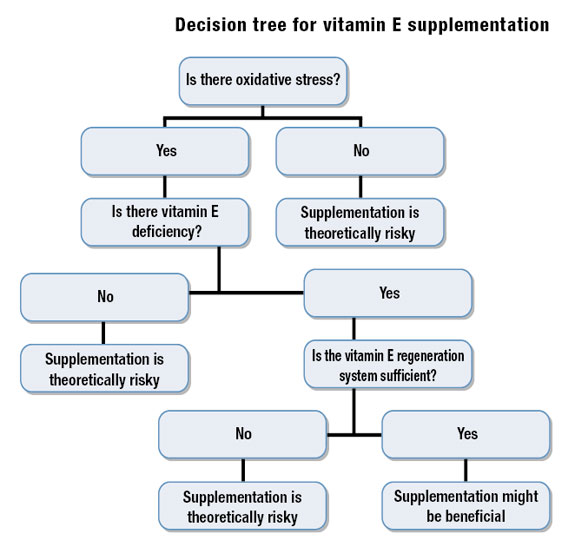“If some is good, then more is better” has been the accepted feeding practice for vitamin E in dairy cows, especially during the dry and early lactation periods. Only positive or “no effect” studies of high vitamin E supplementation have been reported in dairy cows.
Recent evidence demonstrates the existence of adverse effects of high vitamin E amounts (3,000 IU per day) on subclinical and clinical mastitis in dairy cows in early lactation.
This is the first time that an adverse effect of supplemental vitamin E has been found in dairy cows. Interestingly, negative effects of high levels of supplemental vitamin E in humans have been reported recently.

Vitamin E, a fat-soluble antioxidant, is vital for the body’s defense against oxidative stress. Oxidative stress occurs when free radical generation through metabolic processes exceeds antioxidant capacity.
Free radicals damage components of the cells’ membranes, proteins or genetic material by “oxidizing” them and enhancing inflammation in affected tissues. During the transition period, cows experience oxidative stress, which may be a major cause of inflammatory and immune dysfunction.
In a clinical study, 296 cows on five farms were divided into two groups and supplemented with either 135 IU or 3,000 IU of vitamin E per day from dry-off until calving.
Unexpectedly, the high level of supplemental vitamin E during the dry period increased the incidence of subclinical and clinical mastitis cases during the first three months of lactation.
Providing 3,000 IU of vitamin E per day exceeds NRC standards, but this amount is similar to amounts used in some studies that have positive or no effects on cows.
However, the mean vitamin E level at dry-off for the cows used in the clinical study was two to three times higher than the starting level for cows in other studies.
In the field, a few nutritionists may supplement near the 3,000-IU-per-day level, but many nutritionists are supplementing in the 1,200- to 1,800-IU-per-day range. Supplementation of vitamin E has a beneficial effect for cows with suboptimal blood levels (< 7.4 μmol/L).
The authors of the clinical study found evidence for existence of a maximum upper limit. An initial vitamin E level at dry-off greater than 14.5 μmol/L was a risk factor for clinical mastitis.
The authors speculated that the high levels of vitamin E at dry-off, combined with high supplementation, may have overloaded the oxidative stress cascade with vitamin E.
The other molecules in the cascade may have not been able to neutralize all vitamin E radicals. In that situation, vitamin E may function as a pro-oxidant rather than as an antioxidant. The authors proposed a decision tree to assess the effect of vitamin E supplementation. PD
References omitted due to spacebut are available upon request to editor@progressivedairy.com.
—Excerpts from the January Farm Report from the W.H. Miner Institute in New York
Heather Dann is a research scientist with theWilliam H Miner Agricultural Research Institute. Email Heather Dann.






